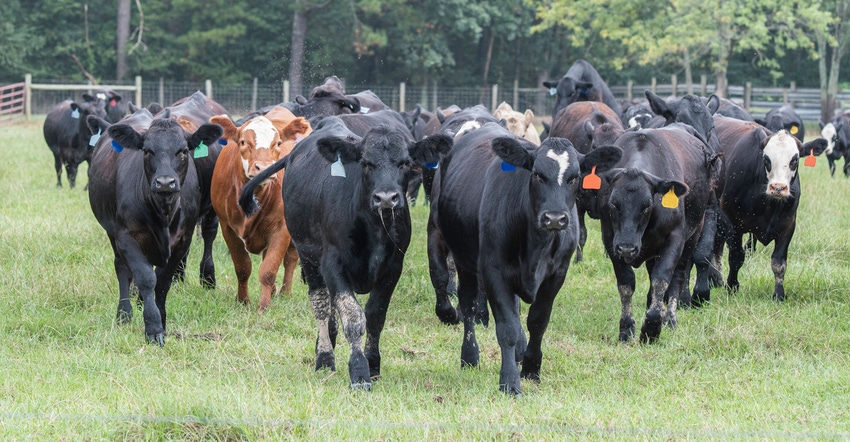February 8, 2021

Back in 2007, BEEF Magazine conducted a comprehensive survey of the beef stocker market to get an idea of the shape of this part of the beef industry. For 2021, BEEF Magazine returned to the subject with a new National Stocker Survey to see how this industry segment has changed in 14 years. The survey was sponsored by Zoetis.
During the recent Virtual BEEF Experience, Wes Ishmael, longtime BEEF writer, worked through the survey and some of its findings. You can see a replay of that conversation by registering for the event online.
In looking at the stocker segment of the cattle market, the survey defined four groups.
The pure stocker is solely involved with stocker cattle and backgrounding animals. This segment represents about 21% of the market.
The cow-calf stocker has a cow-calf herd and runs stocker cattle. About 58% of respondents were classified with this group.
Feedlot stockers raise stockers with an interesting in feeding them out. They represent about 5% of the market.
The whole-cycle stocker ties together the other three approaches in an operation. About 15% of the stocker market is made up from this group.
“The relative populations in the definitions did change,” Ishmael says. “There were 4% more pure stockers, 7% fewer cow-calf stockers and 4% more whole-cycle stockers.”
He says with fewer cow-calf stockers and a rising number of whole-cycle stockers, those producers gain more leverage of the genetics they have, and have retained ownership. In the 14 intervening years since the first survey, the industry went through a drought-fed depopulation of cattle herds that has reshaped the stocker market, too, he adds.
Who raises stockers
The survey shows 60% of respondents were over 65 years old, which is higher than the average age of farmers reported in the latest Census of Agriculture. Yet Ishmael points out that when digging into the numbers, 68% of those responding as age 44 and younger still showed some experience raising stockers.
“That group showed as purchasing stockers for six to 10 years and 11 to 20 years, so the younger end has some experience in the business,” he observes.
The survey shows that this segment of the beef industry is family-owned, with 97% reporting they ran family operations. Three-quarters of the respondents reported they had other family members involved, most commonly their children (62%) or spouses (57%).
“Even the largest operations with 2,500 head or more showed 63% family involvement, and for those in the 1,000 to 2,400 group, there were 66% involved,” Ishmael says.
And stocker income is becoming more valuable. The survey shows 46% of respondents get 51% or more of their annual gross income from stockers. That’s up from 41% in 2007, and 19% say stockers account for 76% to 100% of their annual gross income. In comparing 2021 data to 2007 data, 6% fewer reported having off-farm jobs. A majority of respondents are running stockers year-round.
Ishmael adds that the age of respondents may also have something to do with fewer having off-farm jobs.
Yet the survey shows the typical stocker operation is increasing in size. The mean number of cattle has risen to 790 from 728 just six years ago. “There’s natural expansion involved, but think back over that period of time, and what has been happening in the market,” Ishmael says. “We’re putting more pounds on more cattle outside the feedlot.”
The stocker business is a constantly evolving opportunity for the cattle market. The survey digs into more detail on feeding and grazing patterns too. View the video from the Virtual BEEF Experience where Ishmael discusses the survey. You can also access the entire 2021 National Stocker Survey online.
About the Author(s)
You May Also Like






